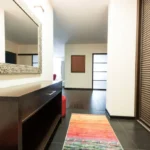Moving homes can be exciting, but it often feels overwhelming once the packing begins. Many Canadians admit they own more than they realize — until the moment they start putting things in boxes. Every drawer and closet seems to reveal something forgotten Minimalist’s Guide, and soon the task feels endless. The stress usually doesn’t come from the move itself but from handling years of accumulated belongings.
Packing doesn’t have to be this hard. The key is to simplify before you start. Minimalist packing or Minimalist’s Guide isn’t about throwing everything away; it’s about being intentional with what you take along. When you move with less, you save time, space, and money. You also make unpacking easier and start fresh in your new place without unnecessary clutter.
This guide focuses on smart, practical steps to help you pack with purpose.
Be inspired by top content curated for you—read our related post today.
1. Start Early and Make a Simple Plan
Most people wait until a few days before moving to begin packing, which only adds pressure. Starting early gives you more control and a calmer experience. You don’t have to do everything at once. Begin with a small goal each day, such as clearing one shelf or packing a single box.
Create a basic plan that includes when you’ll start, which rooms to tackle first, and how much time to set aside daily. Writing down your steps helps you stay consistent and avoid last-minute panic. Try to schedule easy tasks first so you can build momentum.
When you give yourself time, you can make better decisions about what to keep and what to let go. A few minutes of planning now can save hours of frustration later. If you’re short on time or need extra help, consider contacting a local moving company to handle heavy lifting or provide packing supplies so you can focus on organizing efficiently.
2. Sort Before You Start Packing
Packing everything without sorting first is one of the biggest mistakes people make. It leads to wasted effort and heavier boxes. Instead, take time to go through your belongings before you even reach for the tape or boxes.
Work room by room and check every item carefully. Ask yourself if you actually use or need it. Create three clear groups: things to keep, things to donate, and things to discard. Be honest with yourself. If something has sat untouched for years, it probably doesn’t need to make the move.
Sorting also gives you a better idea of how much space you’ll need. Once you’ve done this step, packing becomes quicker and more organized because you’ll only handle what truly matters Minimalist’s Guide.
3. Use This Rule to Declutter Effectively
The one-year rule is quite simple: if you didn’t get a chance to use something in the past year, let it go. This applies to clothes, kitchen tools, books, and even décor. It’s an easy way to decide without overthinking every item.
Look through your wardrobe first. If you forgot an outfit existed, you’re unlikely to wear it again. Check your kitchen drawers next — small appliances or utensils that never leave the cupboard can be donated or sold.
Following this rule reduces clutter and ensures you bring only useful and meaningful items to your new home. It’s a smart way to lighten your load before moving day.
4. Pack by Category Instead of by Room
Packing by category keeps things organized and helps you notice duplicates. Instead of focusing on rooms, group similar items together — books, linens, kitchenware, or décor. This approach helps you see how much you own of each type of item and makes it easier to decide what to keep.
For example, gather all your books from different rooms and sort them at once. Do the same with your clothes or electronics. It’s more efficient and ensures you don’t pack similar items in multiple boxes.
When you arrive at your new home, unpacking is also smoother. You’ll know exactly where each box belongs, and it’ll be simpler to arrange everything in its proper place.
5. Label Your Boxes Clearly and Keep It Simple
Clear labelling can save you hours once you start unpacking. Use a marker or labels to write short, direct descriptions of what’s inside each box. Avoid long lists or vague terms like “miscellaneous.” Instead, write labels such as “Kitchen – Plates and Glasses” or “Bedroom – Winter Clothes.”
If you’re using more than one box for the same category, number them. For example, “Kitchen 1 of 3.” This makes it easier to track what’s been loaded or unpacked. You can also use colour-coded stickers for different rooms if you want to make the process faster.
Keep your labelling system simple and consistent. This extra step during packing will save you time, confusion, and unnecessary searching later.
6. Prepare a First-Week Box for Easy Access
The first few days in a new home can be hectic, especially if you can’t find your essentials. Packing a “first-week” box makes this easier. This box should include what you’ll need immediately after moving — things like toiletries, a few sets of clothes, basic kitchen supplies, important documents, chargers, and small tools Minimalist’s Guide.
Having everything in one place means you don’t have to unpack everything right away. Keep this box separate from the rest and label it clearly so it doesn’t get lost in the pile. It’s also smart to carry it in your own vehicle if possible, especially if movers are transporting your other boxes.
A well-packed essentials box helps you settle in smoothly and keeps the stress of the first few days under control.
7. Donate and Recycle Before You Move
Moving is the perfect time to reduce waste and give back. Many local charities and community centres in Canada accept gently used items like clothing, small appliances, and furniture. Places such as Habitat for Humanity ReStores and Value Village often take donations that help others and keep usable items out of landfills.
Check each item’s condition before donating. Most organizations ask for items that are clean and functional. For electronics or old furniture that can’t be reused, look for recycling programs offered by your municipality. Many provinces have specific programs for electronic waste and old household materials.
Sorting and donating before you move lightens your load and helps your community. It’s a responsible and rewarding step that fits perfectly with a minimalist or Minimalist’s Guide approach.
Moving with fewer things isn’t just about saving space — it’s about making life easier. When you focus on what you truly use and need, every box you pack has a purpose. You save time, reduce stress, and begin your next chapter in a home that feels lighter and more organized.
Minimalist’s Guide helps you move intentionally. It encourages smarter decisions and less waste, which benefits both you and your surroundings. The process becomes simpler when you plan early, sort carefully, and stay consistent.
As you unpack in your new home, you’ll notice the difference. There will be less clutter, more room, and a stronger sense of control. Moving doesn’t have to be overwhelming — it can be a fresh start that reflects the way you want to live: simple, practical, and stress-free.
See what everyone is talking about—explore the featured posts at Management Works Media.






